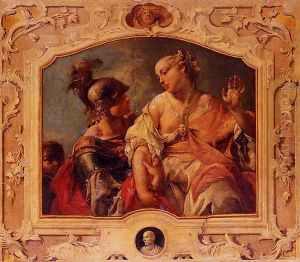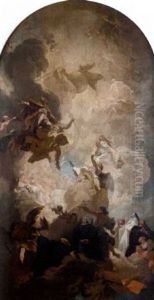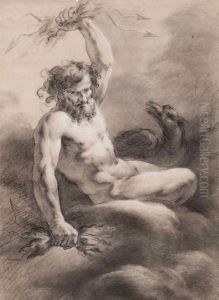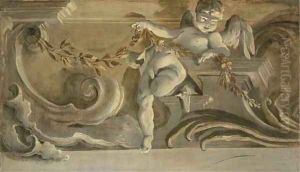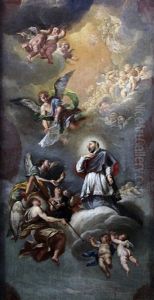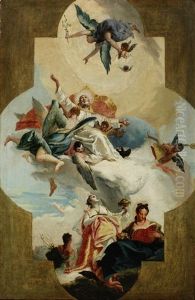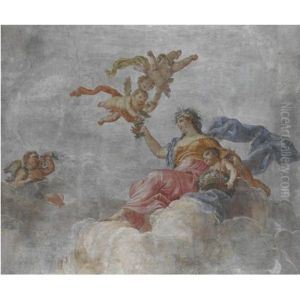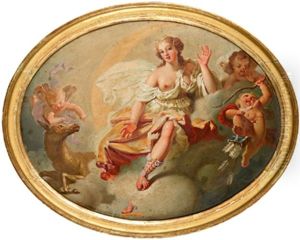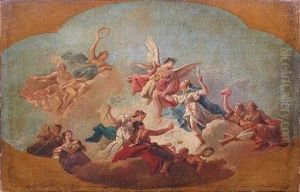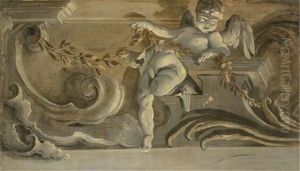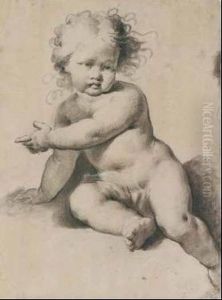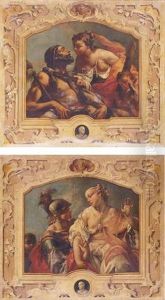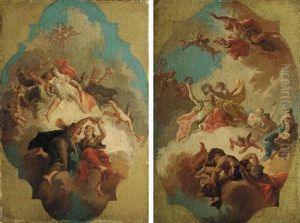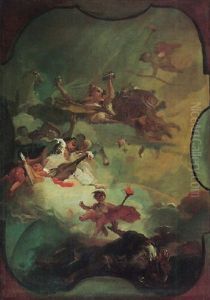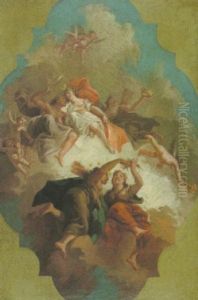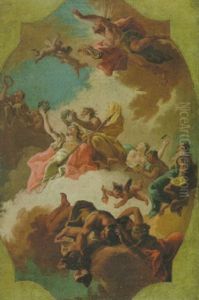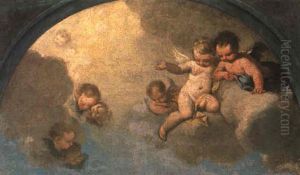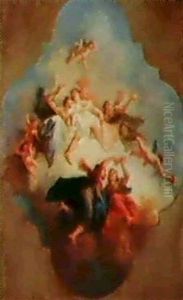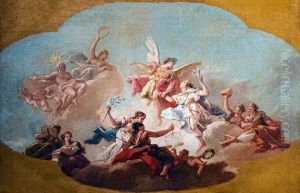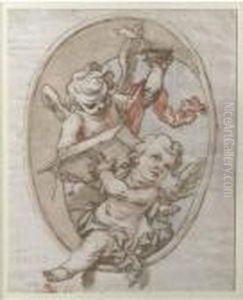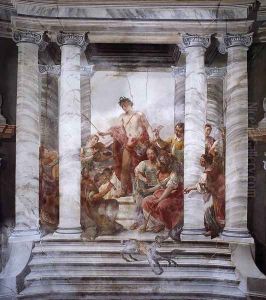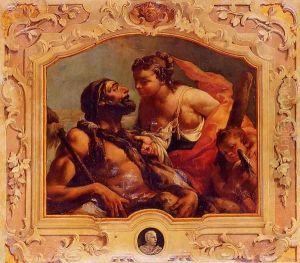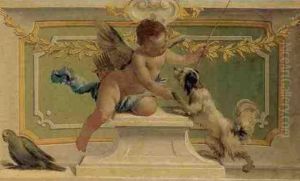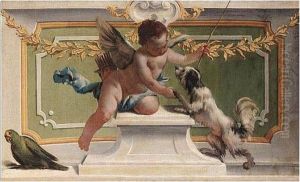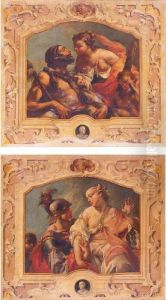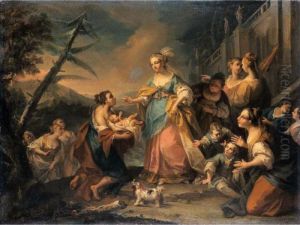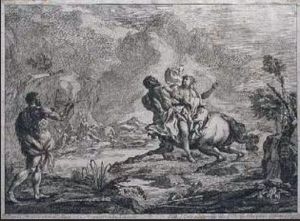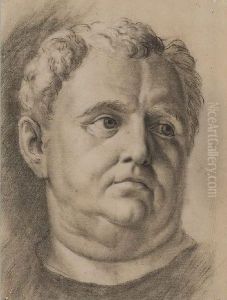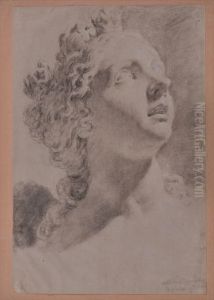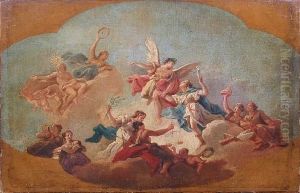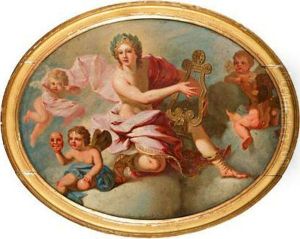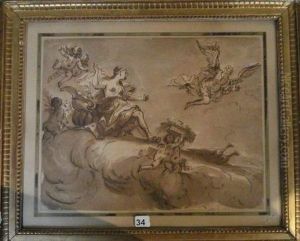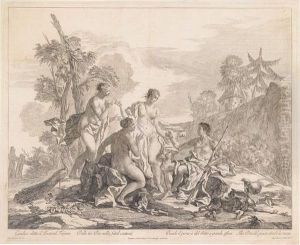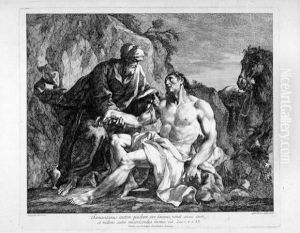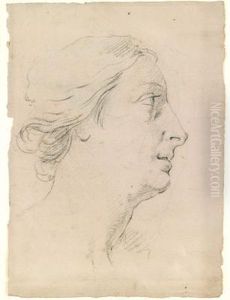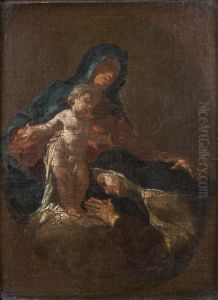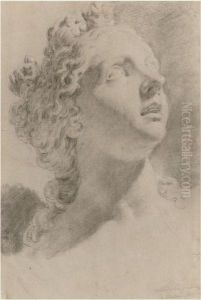Jacopo Guarana Paintings
Jacopo Guarana was an Italian painter of the late Baroque period, active mainly in Venice. He was born on June 17, 1720, in Verona to a family with artistic ties. His father, also named Jacopo, was a painter, which likely influenced Guarana's early interest in art. Guarana initially trained under his father, before moving to Venice to further his studies under the guidance of Sebastiano Ricci and Giovanni Battista Tiepolo, two of the most prominent Venetian painters of the time.
Guarana's work was deeply influenced by the Rococo style, which was characterized by lightness, grace, and the use of delicate colors. He became known for his frescoes and ceiling paintings, which often featured mythological and allegorical subjects. Guarana's style was noted for its dynamic compositions and the elegant, almost ethereal figures he painted.
Throughout his career, Guarana received numerous commissions from the Venetian nobility and religious institutions. Some of his notable works include the ceiling frescoes in the Sala del Maggior Consiglio at the Doge's Palace in Venice, and the frescoes at the Villa Widmann-Foscari in Bagnoli di Sopra. He also worked on the decoration of various churches in Venice, such as the Church of San Stae and the Oratory of San George.
Despite his success, Guarana's work was later overshadowed by the forthcoming Neoclassical style, which turned away from the ornate and decorative features of Rococo. However, his contributions to the Venetian art scene during the 18th century are still recognized by art historians, and his works are preserved in various Venetian landmarks and museums.
Jacopo Guarana died on April 18, 1808, in Venice. His legacy continues to be studied and admired for its embodiment of the last flourishes of the Venetian Rococo before the transition to Neoclassicism. His son, Vincenzo Guarana, was also a painter, although he did not reach the same level of prominence as his father.
